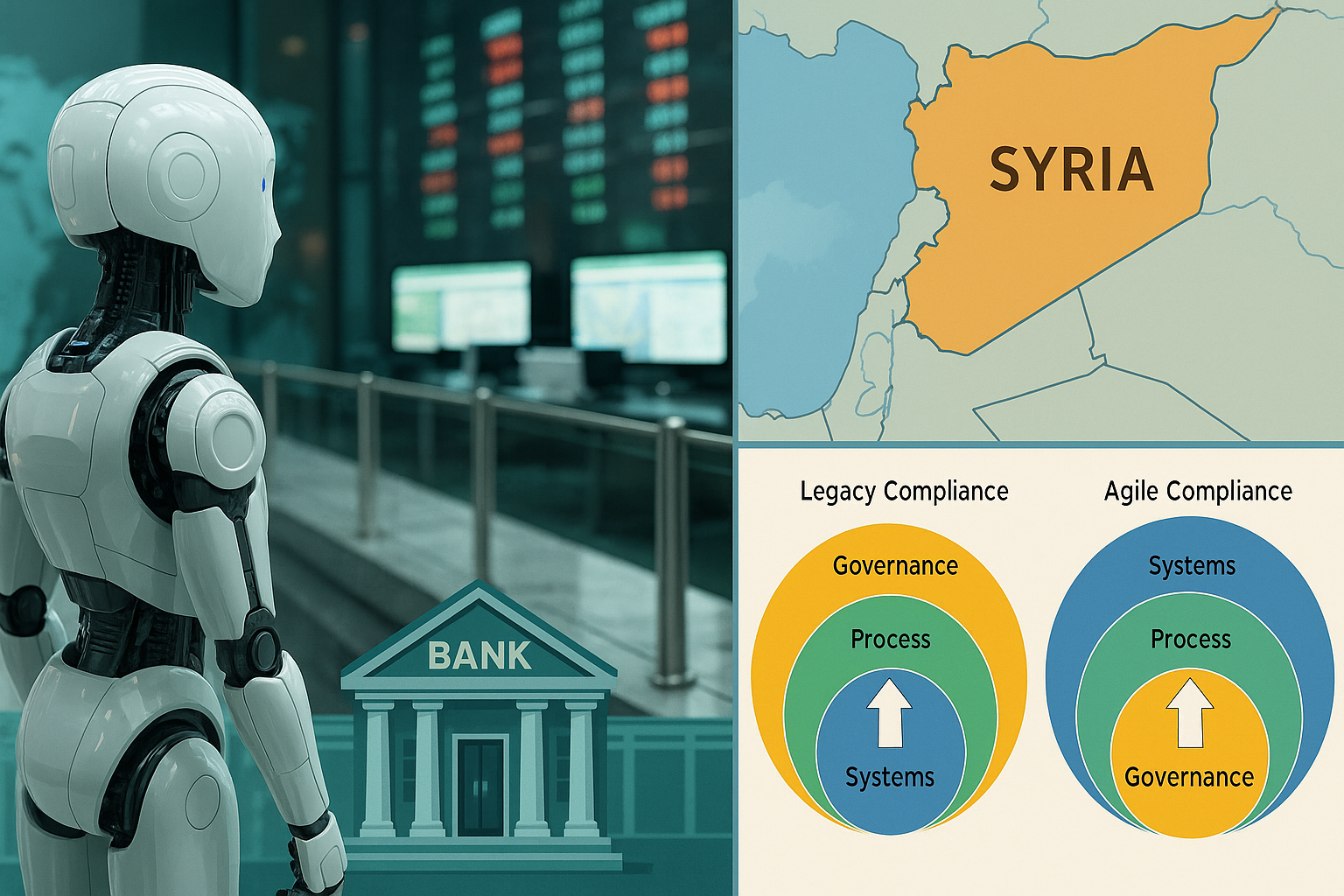AMLA and Amberoon: From Mandate to Market Advantage
The Anti-Money Laundering Act (AMLA) 2020 is a very big deal. For the entire financial services industry, down to the smallest credit unions and neighborhood banks, it changes the game completely. Institutions that haven’t yet incorporated this sweeping legislation into their operating practices are living in the past and threatening their own future.
But it’s not just one more piece of onerous and painful compliance. AMLA 2020 offers the perfect impetus to leapfrog key aspects of industry practices into the 21st century and the digital age. Handled right, it won’t just address the regulatory needs of financial institutions; it will help combat modern-day financial crime, hinder the financing of terrorism and other evils, and enhance performance metrics.
AMLA 2020 became law at the beginning of 2021 through an omnibus statute that encompassed multiple national security issues. The elements specifically related to AML and CFT (counter-terrorism financing) go deeper and wider than any set of laws since the Patriot Act of 2001—in fact, some specific directives are so impactful that they go beyond the financial industry to affect some types of businesses.
A few aspects of AMLA 2020 that have come to be labeled as 'Priorities’ deserve special attention.
First and perhaps most importantly, banks will need to ‘modernize’ existing AML/CFT protocols. This entails heightened monitoring of emerging financial markets and patterns and essentially building an arsenal of new tools to do it. There are also calls for enhanced inter-agency information sharing, which includes the sharing of Suspicious Activity Reports (SAR) with foreign affiliates. Institutions must be more rigorous, and transparent in AML/CFT governance practices, and of course, there are increased penalties for AML and BSA (Bank Secrecy Act) violations.
In sum, close to 5,000 smaller financial services institutions could face a choice between modernization and extinction. No matter how strapped for cash and resources, they must prioritize the tracking of bad actors or risk severe sanctions, hefty fines and regulatory constraints.
So what’s the problem? Here’s a big one: Most of these institutions run on high-cost legacy systems that defy flexibility and customization. There are some modern offerings available, but they’re mostly built by big companies for big companies—large technology vendors on one side, large banking conglomerates on the other. They’re costly, require a high level of skill to deploy and manage, and mandate a wholesale change in the infrastructure. In almost every sense, they’re out of reach for smaller institutions, the very companies that need them the most.
That’s why Amberoon is here.
Amberoon offerings are by design easy to deploy and easier to use. They can be easily integrated with in-house systems—no need for wholesale, costly and immediate change. They’re fundamentally flexible and scalable and work within the budgetary constraints of small banks. They’re the perfect modern solution to a range of modern challenges.
Over the weeks and months ahead, we’ll say a lot more about all this—what these institutions are doing to serve their customers and communities, measures to meet AMLA mandates and others, and why implementing the latest technologies not only ensure compliance but brings a market advantage. And of course, we’ll keep you posted on growing our portfolio of solutions to deliver modernization to this massive but neglected market—small institutions that make up the last mile of the banking system.
Stay tuned.
Posts by Tag
- big data (41)
- advanced analytics (38)
- business perspective solutions (30)
- predictive analytics (25)
- business insights (24)
- data analytics infrastructure (17)
- analytics (16)
- banking (15)
- fintech (15)
- regulatory compliance (15)
- risk management (15)
- regtech (13)
- machine learning (12)
- quantitative analytics (12)
- BI (11)
- big data visualization presentation (11)
- community banking (11)
- AML (10)
- social media (10)
- AML/BSA (9)
- Big Data Prescriptions (9)
- analytics as a service (9)
- banking regulation (9)
- data scientist (9)
- social media marketing (9)
- Comminity Banks (8)
- financial risk (8)
- innovation (8)
- marketing (8)
- regulation (8)
- Digital ID-Proofing (7)
- data analytics (7)
- money laundering (7)
- AI (6)
- AI led digital banking (6)
- AML/BSA/CTF (6)
- Big Data practicioner (6)
- CIO (6)
- Performance Management (6)
- agile compliance (6)
- banking performance (6)
- digital banking (6)
- visualization (6)
- AML/BSA/CFT (5)
- KYC (5)
- data-as-a-service (5)
- email marketing (5)
- industrial big data (5)
- risk manangement (5)
- self-sovereign identity (5)
- verifiable credential (5)
- Hadoop (4)
- KPI (4)
- MoSoLoCo (4)
- NoSQL (4)
- buying cycle (4)
- identity (4)
- instrumentation (4)
- manatoko (4)
- mathematical models (4)
- sales (4)
- 2015 (3)
- bitcoin (3)
- blockchain (3)
- core banking (3)
- customer analyitcs (3)
- direct marketing (3)
- model validation (3)
- risk managemen (3)
- wearable computing (3)
- zero-knowledge proof (3)
- zkp (3)
- Agile (2)
- Cloud Banking (2)
- FFIEC (2)
- Internet of Things (2)
- IoT (2)
- PPP (2)
- PreReview (2)
- SaaS (2)
- Sales 2.0 (2)
- The Cloud is the Bank (2)
- Wal-Mart (2)
- data sprawl (2)
- digital marketing (2)
- disruptive technologies (2)
- email conversions (2)
- mobile marketing (2)
- new data types (2)
- privacy (2)
- risk (2)
- virtual currency (2)
- 2014 (1)
- 2025 (1)
- 3D printing (1)
- AMLA2020 (1)
- BOI (1)
- DAAS (1)
- Do you Hadoop (1)
- FinCEN_BOI (1)
- Goldman Sachs (1)
- HealthKit (1)
- Joseph Schumpeter (1)
- Manatoko_boir (1)
- NationalPriorites (1)
- PaaS (1)
- Sand Hill IoT 50 (1)
- Spark (1)
- agentic ai (1)
- apple healthcare (1)
- beneficial_owener (1)
- bsa (1)
- cancer immunotherapy (1)
- ccpa (1)
- currency (1)
- erc (1)
- fincen (1)
- fraud (1)
- health app (1)
- healthcare analytics (1)
- modelling (1)
- occam's razor (1)
- outlook (1)
- paycheck protection (1)
- personal computer (1)
- sandbox (1)
Recent Posts
Popular Posts
Here is a funny AI story.
Every community bank CEO now faces unprecedented...
On May 13, 2025, the U.S. government announced...



